A recent discovery was to realise that many project managers – some of which work for me – underestimate the importance of an “estimate to complete” which is key to project cost management . Having worked with senior project executives across various industries, they all have one thing in common, and that is the concern of the project actual cost at completion exceeding the approved project budget. It’s no big deal, projects run over budget all the time right? Wrong! A project that exceeds its approved budget could result in reduced benefits and/or lower return of investment that made the project an attractive investment to begin with.
According to McKinsey Insights, on average, large IT projects run 45 percent over budget and 7 percent over time, while delivering 56 percent less value than predicted. This statistic is most likely true for all types of projects not just IT projects and while this has improved over the years, it still remains a scary statistic…
I’ve sat in project steering committee meetings and witnessed many a project manager having difficulty answering this simple question, “what’s this project going to cost in the end?” I find myself cringing when the natural response for some is to answer with the project budget minus the actual cost. This is simply the variance between budget and actual cost and in most cases not what’s needed to complete the remainder of the project. Every project manager must be able to effectively control and manage their costs and this prompted me to share some best practices for cost management in PPO (without getting into complex earned value management formulas!).
Capturing the Project Budget
The cost entity in PPO allows users to capture project budgets, actual costs and an estimate to complete the project. Project managers would typically input the project budget to the cost entity in PPO, or in the case of integration to the organisation’s ERP system, the process of recording the budget is automated on approval of the project request. Depending on the level of detail required, budget records can be captured on a project, month and even year level (for projects running over multiple years) and further categorised on multiple levels e.g. Capex, Opex, Internal or External, etc.
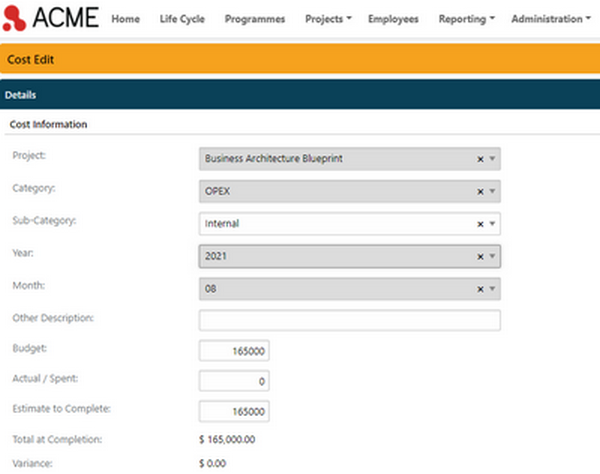
You will notice that at the start of the project, the budget and the estimate to complete values are the same and the total at completion is equal to the project budget. What if the estimate to complete field is left blank? This incorrectly suggests that this cost item is no longer required or will not be spent resulting in a saving with the total at completion reflected as zero.
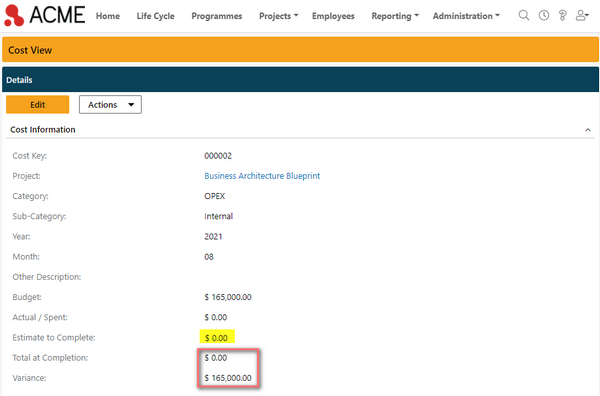
Capturing Actual Cost
As work progresses, suppliers and contractors will submit their milestone invoices for completed and approved scope of work to get paid. Once the invoices are processed, the actual cost incurred is captured against the project.
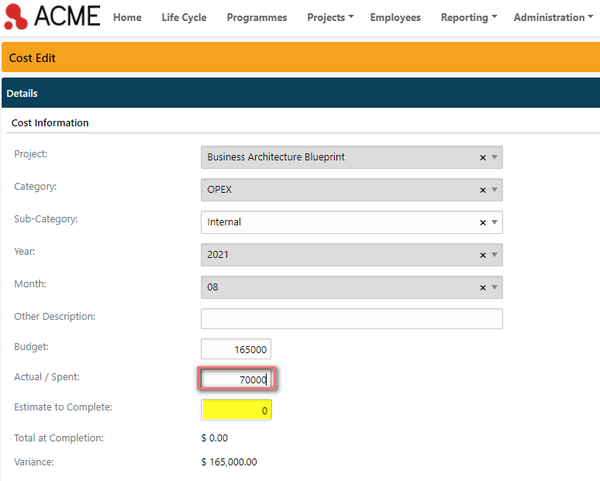
Projects seldom go according to plan in every detail, costs included! It is necessary for the project manager to be able to identify when costs are varying from the budget and manage those variations. The forecasting technique used in PPO to identify potential overruns, savings or the need for additional funding is “Estimate to Complete”.
What is a forecast?
Knowing where a project is at is important, but knowing where it’s going to end up is equally important. With PPO in mind, it is the amount of money needed to complete the remaining work. The process of forecasting must be part of your reporting heartbeat and is input to the Project Manager Dashboard (more on what a good PPO project manager dashboard looks like).
Scenario 1 – Perfect World
The budget for Internal Capex for the month of February is $20 000. A deposit of $5000 for the equipment and the balance of $15 000due on delivery later in the month.
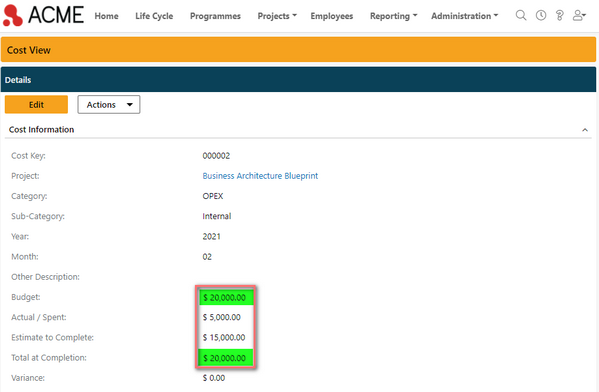
The total at completion is the sum of the actual cost and the estimate to complete.
Scenario 2 – Not so perfect world
The budget for Internal Capex for the month of February is $20 000. A deposit of $5000 for the equipment and the balance due on delivery later in the month. The supplier has just advised that there are additional carriage and logistics costs for the amount of $1000
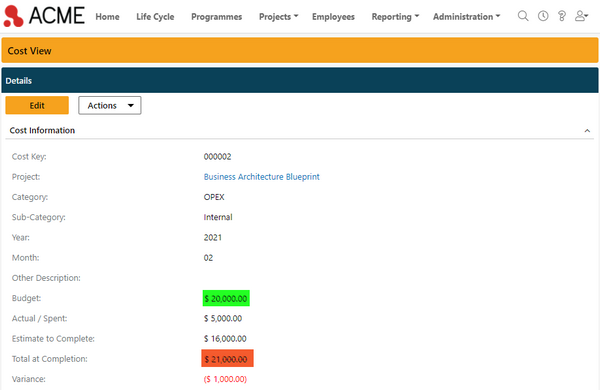
It’s common for project managers to report the overspend once it has already happened. By reflecting the revised estimate to compete, it allows the project sponsor to see whether the necessary funds are available to complete the project or make provision for additional funding.
Scenario 3 – Utopia
The budget for Internal Capex for the month of February is $20 000. A deposit of $5000 for the equipment and the balance due on delivery later in the month. The supplier has just advised that a discount of $5 000 is being offered to loyal customers.

After taking the discount into account, the anticipated cost that you will need to complete the remaining part of the project indicates a variance (cost saving). The variance in PPO is the difference between the project budget and the total at completion.
In PPO, it’s never a good idea to:
- Take the estimate to complete field out of use – reporting on a project’s budget performance during the project delivery stages is key to the process of cost management and removing this field will increase the likelihood of having a project that goes over budget
- Calculate the estimate to complete field using the difference between the actual cost and the budget – this will take away the responsibility of the project manager for highlighting the future for the project in terms of cost and overruns will only be acknowledged at the end of the project
- Leave the estimate to complete value blank – project sponsors want to know that you’re on top of things and doing what it takes to ensure that the project is completed within the approved budget and at the very least highlighting potential overruns with advance notice
Any project, however big or small needs to be executed under cost constraints. It is and will remain the job of the project manager to continually to verify that the project’s cost and schedule goals can be met within the authorised budget. Hopefully these insights for managing project costs in PPO can make you a better project manager and increase your chances of project success.
Good luck…


